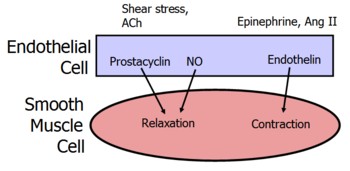
Cells and Molecules
last authored:
Introduction
Cells are fundamental units of the body. They are arranged into tissues. Cells are made up of molecules. The cell surface membranes and nucleus membranes are made up of fats, with chunks of protein studding them.
Carbohydrate chains and trees are attached all over the place, playing an absolutely critical role in the highly specialized signals required for life as a cell and a person.
Proteins make up the receptors on the cell surface, enabling them to respond to signals from themselves, other cells, pathogens, environmental conditions, or damage. Proteins also make up the machines that make a cell work (so called kinases), the structural framework of the body (like collagen), and many of the body's signaling mechanisms (like insulin).
Watch Harvard University's Inner life of a cell, first without narration and then with narration
Cell Structure
- cytoskeleton
- plasma membrane
- cytoplasm
- mitochondria
- Golgi apparatus
- endoplasmic reticulum
- lysosomes
Cytoskeleton
Microtubules
Microtubules are important.
Plasma Membrane
Mitochondria
Mitochondria are the cell's energy source.
Sync with glycolysis.
Mitochondria in Various Cell Types
cardiomyocytes are about 35% mitochondria.
Golgi apparatus
Endoplasmic Reticulum
Lysosomes
Cell Molecules
"People are walking collections of molecules". In this section, various molecules are discussed.
- proteins are responsible for essentially everything that happens in the body. They are composed of amino acids.
- carbohydrates provide energy and perform important sigaling and recognition functions.
- lipids form cell membranes, provide energy, and are used to synthesize various other molecules.
- nucelic acids represent the storage and manifestation of information responsible for cell, tiusse, and organism behaviour.
- ions produce osmotic gradients and signals.
- Water is by far the most prevalent and important molecule of the body.
- gases... are hard to explain in one line.
- receptors
- ion channels
- second messengers
- signaling pathways
Receptors
Structural Classification
Functional Classification
Ion Receptors
Endocrine Receptors
Ion Channels
Ion channels are key proteins. Most have contain multiple domains with 6 transmembrane segments.
Many ion channels are gated, only allowing ions through at certain times.
Voltage sensitive ion channels open given the voltage within the cell. During depolarization or repolarization of cells, specific channels open or close.
Fast sodium channels
Fast sodium channels open during depolarization, but remain this way for a few thousandths of a second. They then spontaneously close to an inactive state, remaining this way until the cell has repolarized to almost its resting state.
Furthermore, maintenance of less negative transmembrane voltage results in inactivation of sodium channels without initial opening. This is the case in cardiac pacemaker cells, which thereby have persistently inactivated fast sodium channels.
Local anesthetics such as lidocaine, as well as TTX, inhibit sodium channels.
L-Type Calcium Channels
inhibited by nifedipine, verapamil
An ugly table
| Current | Channel | Ions | Reversal Potential of Current | Inhibitors |
| I Na | Voltage-gated Na+ channel | Na+ | +60 | |
| I Ca | L-type Ca2+ channel | Ca2+ | +120 | |
| I KR | HERG + minK | K+ | -100 | Ba2+, Cs+, TEA |
| I Ks | KvLQT1 + minK | K+ | -100 | Ba2+, Cs+, TEA |
| I Kf (pacemaker) | HCN | Na+, K+ | -35 | Cs+ |
Second Messengers
SMs are important components of cellular signaling pathways.
These include cAMP, used in the PKA, etc pathways.
Signaling Pathways
Signaling pathways confer information outside cells, on their surface, and inside them, using proteins, ions (ie calcium, sodium, etc), fats, carbohydrates, and other molecules and atoms.
Cell Types
- epithelial
cells - endothelial
cells - connective tissue
cells - muscle
cells - nervous tissue
cells - stem
cells
Epithelial cells
Endothelial Cells
Connective Tissue Cells
- fibroblasts
- adipocyte
Muscle Cells
- skeletal muscle
Smooth muscle cells are involuntary cells found primarily around stuctures under autonomic control, including the vasculature, airways, gut, and glands.
Control of Smooth Muscle Cell Length

Nervous Tissue Cells
Stem Cells
Stem cells are capable of living for a very long time, dividing to make new cells.
Stem cells of different types are capable of self renewal and are pluripotent, making them capable of differentiating into a range of tissue types.
Stem Cells in the Media
Cell Behaviours
- mitosis
- miosis
- movement
- adhesion
- protein synthesis
- endocytosis
- exocytosis
- proliferation
- apoptosis
- differentiation
- migration
- endocytosis
- exocytosis
Resources and References
